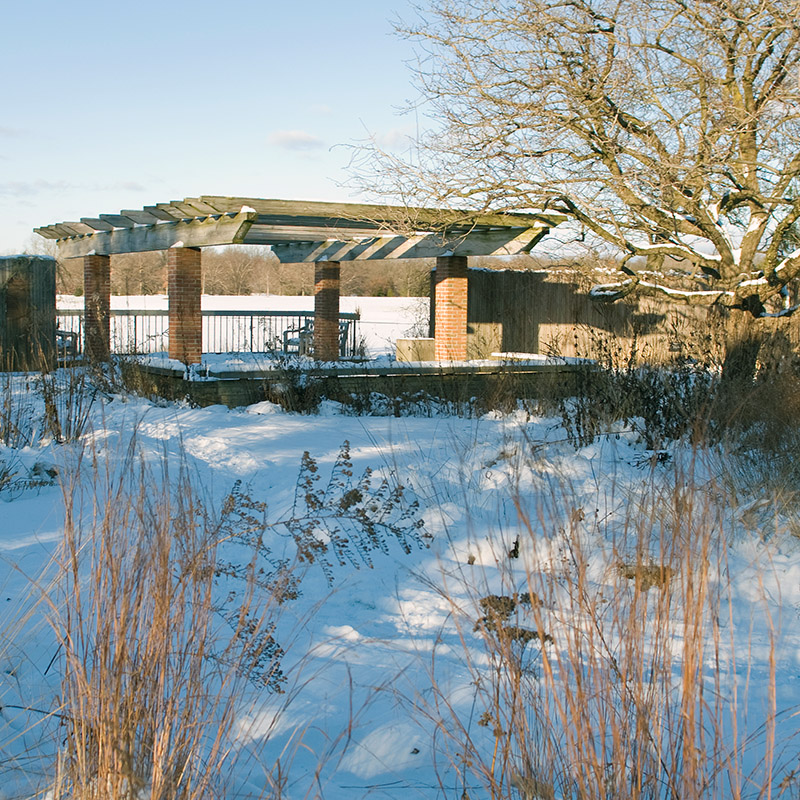Discover ideas for using native Illinois plants in your home landscape.
The Native Plant Garden displays three distinct areas—a woodland path, close to the lake, with native plants preferring part shade; a sunny prairie, showcasing the diversity of native prairie plants; and a pollinator area, designed to appeal to native bees and butterflies.
The woodland displays native plants that prefer part shade. Layers of plants with sequential bloom times range from tall trees to tiny wildflowers. Look for shagbark hickory, American hop hornbeam, and swamp white oak. Companion understory shrubs include witch hazel, spicebush, buttonbush, and native raspberry. A few of the perennials and spring ephemerals here include wild ginger, Christmas fern, and red and yellow trillium.
The prairie was designed to show how this ecosystem blooms "from the ground up" with low-growing plants starting the flowering season with shooting star and prairie smoke, followed by short grasses and perennials such as wild indigo, early coreopsis, wild petunia, and little bluestem. Last to bloom are massive rosinweeds and tall grasses. The grasses and wildflowers growing here are all suitable plants for backyard naturalistic gardens. Many have an added benefit of attracting birds to feast on the mature seedheads in fall. The dense plantings provide shelter and nesting habitat as well. This area is cut back annually in late winter, well after the nesting season has concluded, and seeds have been eaten.
The pollinator area showcases additional native plants that will encourage bees and butterflies to visit. In addition to forbs (an ecological term for herbaceous perennial plants that are not grasses or their relatives), native flowering shrubs and vines with berries are also attractive to wildlife, including native bees. Rose, hawthorn, bittersweet, winterberry, chokeberry, and serviceberry provide welcome food sources and nesting sites for birds as well.
Throughout, the garden shows off the special beauty, adaptability, and diversity of the state's native flora.





